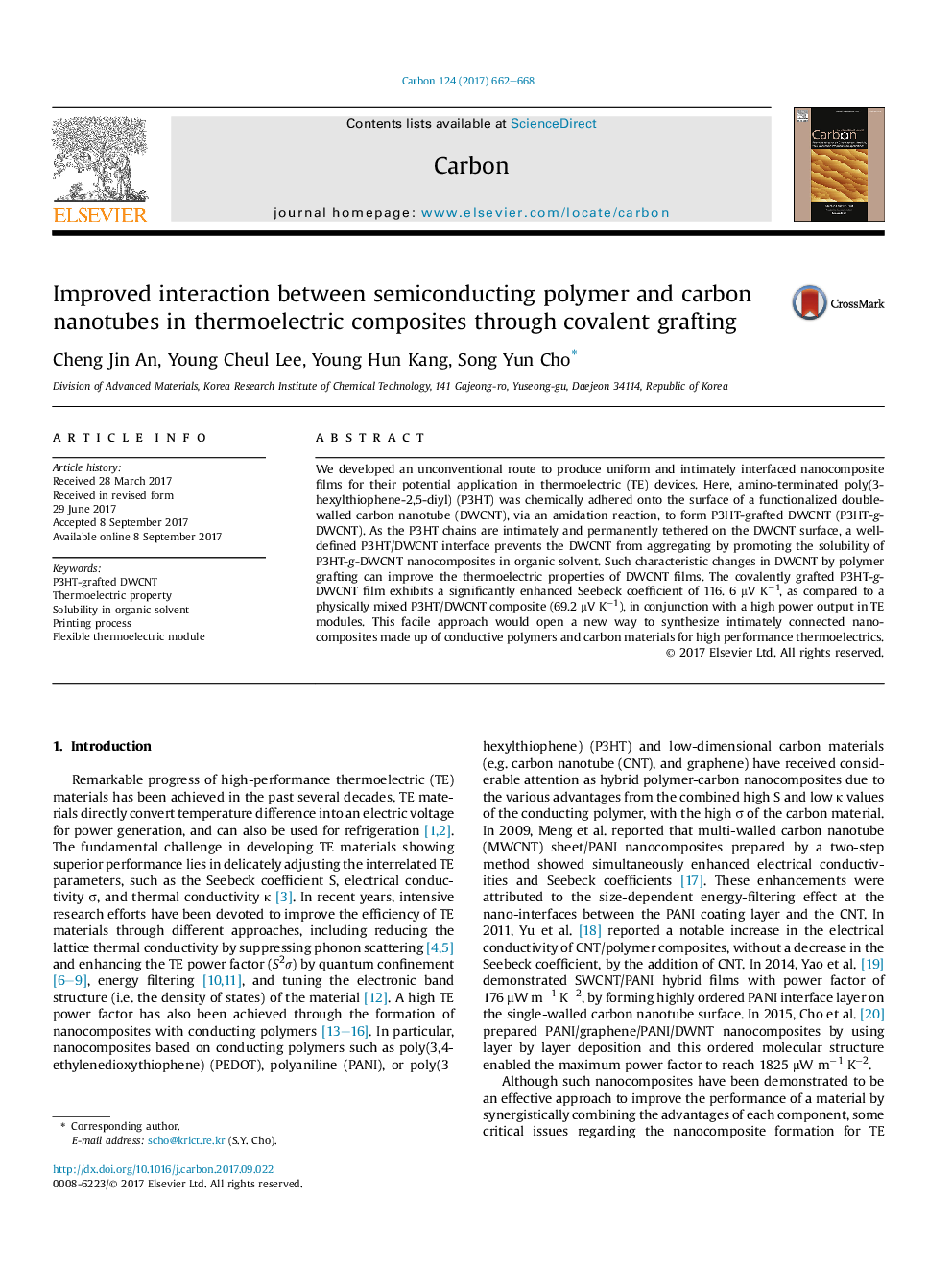| Article ID | Journal | Published Year | Pages | File Type |
|---|---|---|---|---|
| 5431803 | Carbon | 2017 | 7 Pages |
We developed an unconventional route to produce uniform and intimately interfaced nanocomposite films for their potential application in thermoelectric (TE) devices. Here, amino-terminated poly(3-hexylthiophene-2,5-diyl) (P3HT) was chemically adhered onto the surface of a functionalized double-walled carbon nanotube (DWCNT), via an amidation reaction, to form P3HT-grafted DWCNT (P3HT-g-DWCNT). As the P3HT chains are intimately and permanently tethered on the DWCNT surface, a well-defined P3HT/DWCNT interface prevents the DWCNT from aggregating by promoting the solubility of P3HT-g-DWCNT nanocomposites in organic solvent. Such characteristic changes in DWCNT by polymer grafting can improve the thermoelectric properties of DWCNT films. The covalently grafted P3HT-g-DWCNT film exhibits a significantly enhanced Seebeck coefficient of 116. 6 μV Kâ1, as compared to a physically mixed P3HT/DWCNT composite (69.2 μV Kâ1), in conjunction with a high power output in TE modules. This facile approach would open a new way to synthesize intimately connected nanocomposites made up of conductive polymers and carbon materials for high performance thermoelectrics.
Graphical abstractDownload high-res image (282KB)Download full-size image
